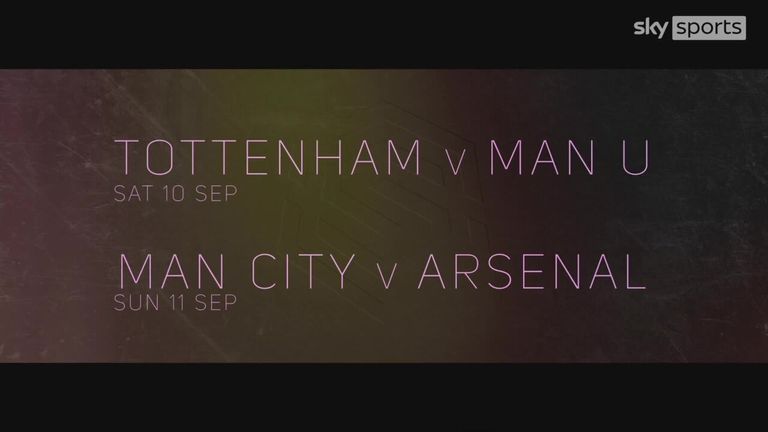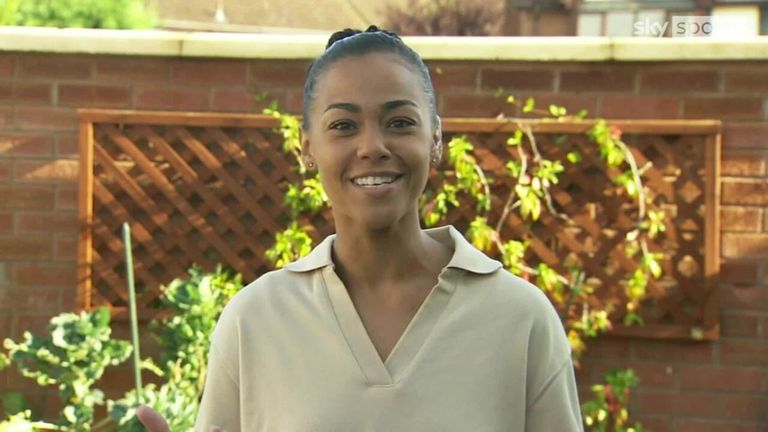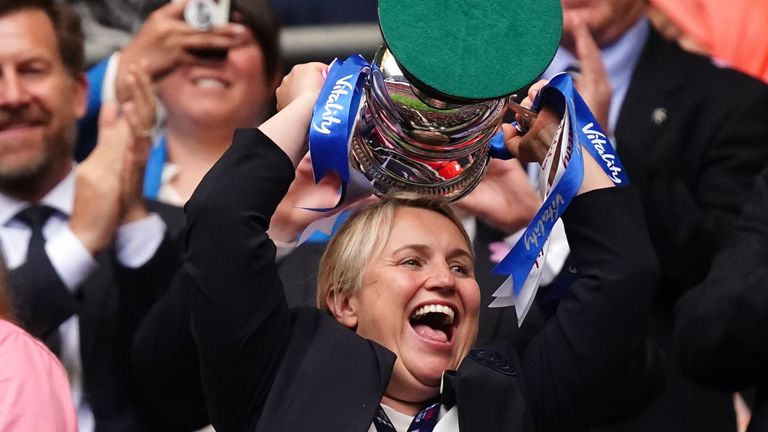When Matt Jones tore his cruciate ligament twice before the age of 20, any hopes of a career as an elite sportsman went out the window.
Luckily for him, the silver lining was right before his eyes. The industry was not cut off to him forever.
“During the second period of recovery, I started reading about nutrition because I was being treated by physiotherapists, strength and conditioning coaches and even had discussions with psychologists, but no-one ever told me what to eat,” he explains to Sky Sports.
“I then found myself gaining weight quite rapidly as I was going from an incredibly high energy expenditure to an incredibly low energy expenditure while being on crutches.
“I became fascinated by the impact of nutrition on health, performance, recovery and injury as well. In those days – around 15 years ago – sports nutrition wasn’t really a thing, so I went on to do an undergraduate in sports science, which was fairly broad and generic, and then went on to do a masters in nutrition science, because that sports science degree really hammered home that sports nutrition was the thing I was interested in.”
As he has built a reputation for himself over the past decade, Jones has worked in Brazil, the UAE, Saudi Arabia and the USA, but, since the summer of 2019, he has been balancing his role as West Ham’s first team sports nutritionist with a similar consultancy role with Chelsea Women.
In each of the three seasons since, Emma Hayes’ Blues have lifted the Women’s Super League title, so it goes without saying that work so far has gone a significant way to aiding that success.
That being said, he admits that, when he was offered the role by former head of performance Bart Caubergh, he saw it as being “very much out of my comfort zone”.
“It was a huge learning curve,” he says. “The cultural elements and the financial elements, back then, had a big impact on the day-to-day running of the club itself and my ability to impact things.
“At West Ham, for instance, I took my daily interaction with chefs and supplement companies for granted. At Chelsea, they don’t have an allocated chef and they have a smaller supplement budget, so in the initial stage, it was all about education because the girls needed to understand what to do when away from the club, in terms of food and nutrition.
“When you are working with women, the menstrual cycle has to come into your thinking as well.
“I was very fortunate to work alongside Georgie Bruinvels, who is a director of a company called Orreco. She did a PhD on the impact on performance and the physiological impact of the menstrual cycle. She took control of all of those elements and we worked very closely.
“First and foremost, she helped me better understand the menstrual cycle. I was then able to piece things together from a nutrition perspective and make some small alterations in diet to better align and support the girls.
“The jury is still out on whether that can impact performance. In some players, they certainly reported an impact during the menstrual cycle.”
So what exactly does a sports nutritionist do?
“I like to spend time in various areas that nutrition can impact. What I’ll often do is a theoretical session as a group, which can be like a traditional lesson with presentation. Sometimes, I’ll record a video and share that video with the group.
“That will be the first week of a month-long cycle and the second week would be more of a practical applied session, which could be in the dining room. We could be talking about carbohydrates as fuel and how you have a little petrol tank in your muscle that fills up when you eat carbohydrates and, when you do any intense action, the petrol tank drops.
“So after 70-75 minutes of intense action in football, for instance, the petrol tank is completely empty and that’s when players will experience fatigue. Consuming more carbohydrates in the days leading up to the game is going to ensure that petrol tank is full. In the dining room, I would point out the different carbohydrate options and talk about serving sizes and that kind of thing.
“In the third week, I would probably be out on the grass with players, pointing out intense actions i.e. you’ve just done a 10m sprint, so your petrol tank has just dropped by x percent. That is an opportunity to think about how to get fast fuel on board at half-time or during breaks in play, such as gels, or taking on carbohydrates to top up those fuel tanks.
“The next month I’ll take another topic and go through the same process.
“Recovery is also a big component of what I do. If you imagine a pyramid of importance, the foundation would probably be sleep. The second layer would likely be nutrition, re-fuelling, repairing damaged muscle, reducing inflammation and rehydrating.
“Above that you might have water immersion and then above that cryotherapy and things like that that get a lot of media attention.”
In the grand scheme of things, the idea of focusing on nutrition and its impact on performance and recovery – among many other aspects – in football is still very much in its infancy. “When I first started out, I was there to help people lose weight. Now it’s about fine-tuning athletes,” says Jones.
As a result, his work is, at this stage, very much based upon education. And to be able to educate successfully, there must be a buy-in from the players themselves.
“Buy-in is huge,” he adds. “That ultimately stems from the relationship you build with the players and the trust you build.
“Behaviour change requires three key things; opportunity, motivation and capability. The opportunities come out of the environment, education and, in some cases, persuasion. Motivation is the reason for doing it. Capability is giving them the skills and shaping the environment to change those behaviours.
“In the early days, I realised I needed to have a strong philosophy that I could come back to all the time, almost like a litmus test. My philosophy is simple, meaningful and with purpose.
“I was fortunate enough to go and work in Brazil with Flamengo and they had no idea what I was talking about, so I quickly realised everything has to be simplified and it also had to be in the language of football and food as well. Rather than talking about 30g of protein, you have to talk in the language of food and say one chicken breast or one salmon fillet.
“Players in Brazil just want to play football, so it had to be in the language of football as well, so that carbohydrate is going to allow you to run for 10 minutes more and play football for 10 minutes longer.
“There is a much greater emphasis and much greater appreciation for the impact of nutrition nowadays. There are role models within clubs and outside of clubs within football in general, like Cristiano Ronaldo, for example. Back in the day, nutrition could change body weight slightly, but now people really understand the true impact of nutrition.
“Now I have 18, 19-year-olds – even 16-year-olds – that are coming and asking how they can eat better to enhance their performance. You then have more time to help them because you can help instil new behaviours and new habits at a really young age that are going to put them in a really good place going forward.
“That has also come from ex-players becoming coaches. They have experienced working with sports nutritionists, felt the difference themselves, started to value it and then started to apply within the clubs they now manage. They are cultural architects.”
Having a foot in both the men’s and women’s game, Jones is well-placed to comment on the comparison between the two.
He says: “Where West Ham would have very few opportunities to train really hard in season, if Chelsea Women have weeks off or weeks without a midweek game, they would essentially replicate the physical demands of a game in a training session.
“I would imagine you could compare the weekly loads and it would probably be similar. There will be targets, both individual targets and team targets as well.
“Recovery might be one of the targets during a period where they are playing multiple times in different counties, so there is going to be a huge emphasis on recovery during those times and that’s where you pull together as a team and essentially map out every minute of the day for most players. We just try and take every opportunity to optimise recovery.”
But there is one stark difference.
“Women’s football is very different to men’s football as I’ll often be in Emma’s office, whereas at West Ham, I can count on one hand the amount of times I’ve been in David Moyes’ office.
“The access you have to coaches is a lot different and it enables you to build a good relationship.”





